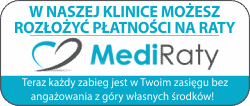Transplantation of one’s fat tissue, sometimes also called lipoinjection, involves the removal of adipose tissue from places where it occurs in excess (e.g., lower abdomen, buttocks, lateral surface of the thighs). However, the transplant is also often taken from other places, such as the waist, knees, neck, shoulders, etc. in order to obtain the right amount of tissue.
The tissues are collected in such a way as to obtain as many undamaged fat cells as possible for further use and to inject them into selected regions after appropriate preparation.
Fat is served in the right amount and evenly and in such a way as to maximise the reception of cells by the body. Disposable application of fat tissue will firm breasts and increase their volume even by the entire size. In order to obtain a larger breast enlargement, the procedure should be repeated, but not earlier than after three-four months.
It is worth noting that the amount of adipose tissue that is transplanted the first time is small (several dozen cm3), and the effect is not permanent (in general, part of the adipose tissue is absorbed after 3-6 months).
For whom: The treatment is recommended for women between the ages of 30 and 50, whose natural breasts are not too large, and the degree of their fall down is moderate, or for those who, due to weight loss or breastfeeding, want to regain their former shape. The treatment is also performed for reconstruction after mastectomy.
